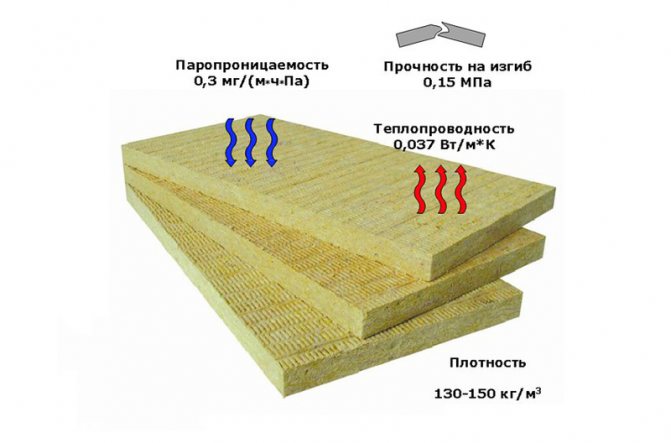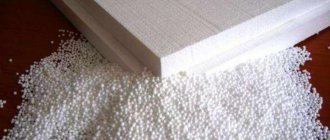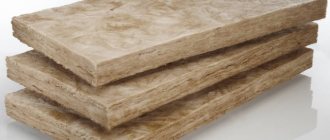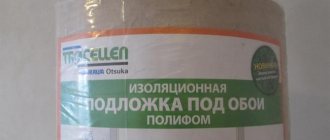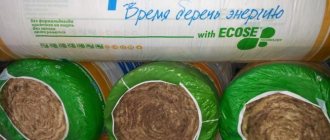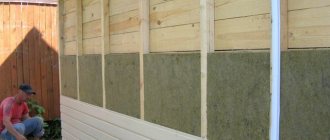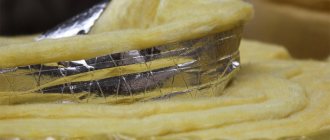Variety and indicators of foam
The construction market offers a large selection of insulation materials. Polyfoam has low thermal conductivity. But this figure may vary, depending on the type of polystyrene. When compared with other heaters, certain conclusions can be drawn. For example, a 50-60 mm thick foam sheet can be replaced with a large volume of mineral wool. Material with a density of 100 mm can be replaced with expanded polystyrene with indicators of 123 mm. The characteristics of these types of insulation are slightly similar. Therefore, the difference is small. The indicators of foam plastic also exceed the characteristics of basalt wool.
general description
Polyfoam is a plate of various thicknesses, consisting of a foam material - polymer. The thermal conductivity of the foam is provided by air, of which it consists of 95-98%, i.e. gas that does not allow heat to pass through.
Since the foam is basically air, it has an extremely low density, and, accordingly, a low specific gravity. Also, the foam has very good sound insulation (thin air-filled cell walls are a very poor conductor of sounds).
Depending on the feedstock (polymer) and manufacturing processes, it is possible to produce foam of different density, resistance to mechanical factors, resistance to other types of impact. In connection with the above, the choice of a certain type of foam and its application is determined.
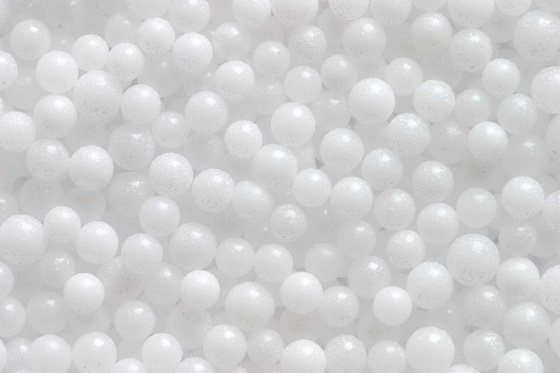
Cylindrical
Often the question arises, what kind of stone wool is in the form of a cylinder. Since it is used for insulated pipes, it is the diameter of the pipes that must be taken into account in size. The design of the insulation is specific, each element consists of:
- Mineral fibers.
- Reinforcing fiberglass mesh.
- Foil.
These often have a groove / ridge system that helps eliminate heat loss at the joints. Withstands such a heat insulator temperature up to + 250⁰. Standard sizes from different manufacturers:
- Inside diameter - 1.2-32.5 cm.
- Length no more than 1.2 m.
- Thickness from 2 to 9 cm.
Specify specific dimensions should be checked with the manufacturer or the store seller.
Features of TechnoNIKOL mineral wool
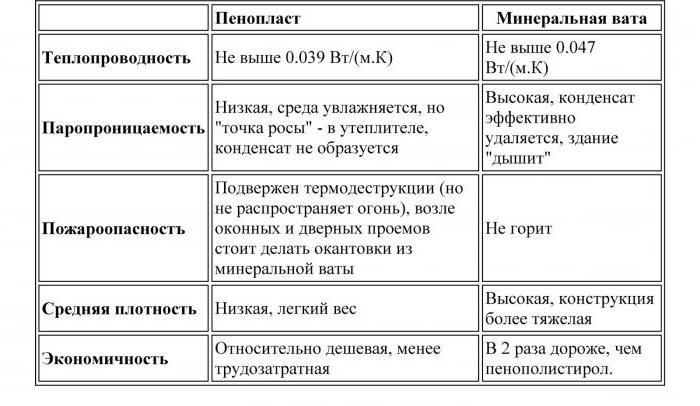

If you decide to choose Technonikol products, the thermal conductivity coefficient of mineral wool from this manufacturer should also interest you. It is equal to the limit from 0.038 to 0.042 W / m * K. The material is a water-repellent non-combustible board, which is designed for sound and heat insulation. Material is created on the basis of rocks that belong to the basalt group.
Plates are used in industrial and civil construction, external wall insulation systems, where the material is protected from above with a decorative coating made of thin-layer plaster. The material is not combustible, its vapor permeability is 0.3 Mg / (m · h · Pa). Water absorption is 1% by volume. The density of the material can be equal to the limit from 125 to 137 kg / m 3.
The thermal conductivity coefficient of mineral wool is not the only property to be aware of
It is also important to ask about other parameters, for example, length, width and thickness. The first two are equal to 1200 and 600 mm, respectively
As for the length, in 10 mm increments, it can vary from 40 to 150 mm.
What is thermal conductivity and thermal resistance
When choosing building materials for construction, it is necessary to pay attention to the characteristics of the materials. One of the key positions is thermal conductivity
It is displayed by the coefficient of thermal conductivity. This is the amount of heat that a particular material can conduct per unit of time. That is, the lower this coefficient, the worse the material conducts heat. Conversely, the higher the number, the better the heat dissipation.
Materials with low thermal conductivity are used for insulation, with high ones - for transfer or removal of heat. For example, radiators are made of aluminum, copper or steel, since they transfer heat well, that is, they have a high coefficient of thermal conductivity. For insulation, materials with a low coefficient of thermal conductivity are used - they retain heat better. If an object consists of several layers of material, its thermal conductivity is determined as the sum of the coefficients of all materials. In the calculations, the thermal conductivity of each of the components of the "pie" is calculated, the found values are summed up. In general, we obtain the thermal insulation capacity of the enclosing structure (walls, floor, ceiling).
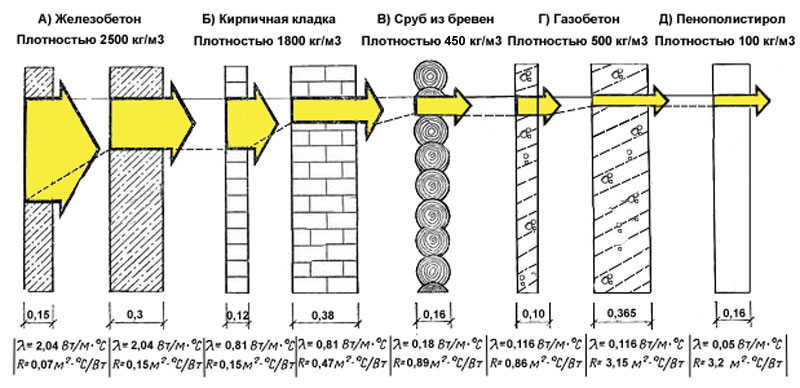

There is also such a thing as thermal resistance. It reflects the ability of a material to prevent heat from passing through it. That is, it is the reciprocal of thermal conductivity. And, if you see a material with high thermal resistance, it can be used for thermal insulation. An example of thermal insulation materials can be the popular mineral or basalt wool, foam, etc. Materials with low thermal resistance are needed to dissipate or transfer heat. For example, aluminum or steel radiators are used for heating, as they give off heat well.
Coefficient of thermal conductivity of different types of mineral wool. What to consider
The indicator, the so-called thermal conductivity coefficient of mineral wool, characterizes the ability of this material to retain thermal energy. It is measured in W / (m ° C) and is used to calculate the thickness of the thermal insulation layer for interior and exterior decoration. The higher this coefficient, the better the heat is retained in the room protected with this material. Minvata has one of the best performance, comparable to polystyrene and penoizol.
Types of mineral wool boards
The currently valid GOST 52953-2008 divides mineral wool into three types:
- glass (glass wool),
- stone (basalt) mineral wool,
- slag.
Glass wool is, first of all, a budget type of insulation that has a high density and elasticity. In this case, the thermal conductivity of mineral wool is 0.03–0.052 W / (m ° C). For its manufacture, the same materials are used as for the production of ordinary glass - soda, sand, borax, limestone and dolomite. The obvious advantages of choosing glass wool include not only its low thermal conductivity, but also a relatively low cost, to the disadvantages - a harmful effect on the skin and respiratory organs.
For the manufacture of slag wool, blast-furnace slag is used. At the same time, the thermal conductivity of the material is higher than that of glass wool, but still quite low - at the level of 0.46-0.48 W / (m ° C). The advantages of mineral wool can be listed for a long time, but the main ones are a relatively low cost, ease of installation and a high coefficient of sound absorption, among the minuses they distinguish - the high hygroscopicity of the material, due to which it easily absorbs moisture.
Stone mineral wool is obtained from the melts of igneous rocks - primarily from basalt. That is why this material is sometimes also called basalt wool. Its thermal conductivity varies in wider ranges, in comparison with other types of mineral wool, from 0.032 to 0.046 W / (m ° C), therefore it is difficult to call this type of wool popular when used as a heater. At the same time, basalt wool is considered the most durable among analogues and is least susceptible to moisture. However, it is more expensive than other types of mineral wool.
Characteristics table
The value of the thermal conductivity of a mineral wool slab primarily depends on the selected material. The thickness of the material does not matter for the coefficient, but it is directly related to the level of protection of the enclosing structures. Therefore, for floors, partitions and interfloor floors, the heat loss through which is lower than in other areas, mineral wool slabs up to 50 mm thick are used. The same value is permissible for internal insulation (but already due to space saving). Facades and pitched roofs are insulated with mineral wool from 100 to 200 mm thick.
Tab. 1. Thermal conductivity and other indicators of mineral wool boards.
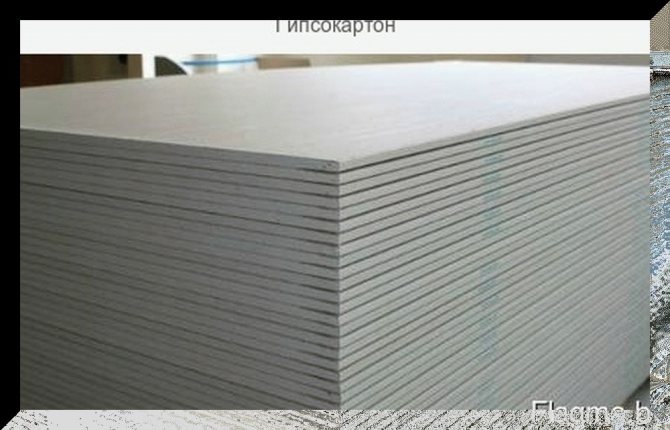

Fire resistance
The main advantage of mineral wool in comparison with other insulators is its incombustibility. It is allowed to use this material for warming surfaces, the temperature of which reaches +400 degrees Celsius. That is why mineral wool slabs are an ideal insulator for boilers and furnaces of various types. Basalt fibers begin to melt only after a two-hour exposure to a temperature of 1000 degrees. This is a very impressive figure. As for the ambient temperature, this material can withstand 750 degrees without harm to itself. The flammability group of mineral plates is KM0. The foil variety has KM1.
View gallery
Thermal conductivity coefficients
All durable components are gradually heated, and after cooling, in compliance with the intervals, the temperature regime of the internal structure and the surface of the material. The thermal insulation qualities of mineral wool are demonstrated by the coefficient of thermal conductivity. Its lowest value ensures maximum retention of thermal conductivity. Often the values of the coefficient are pre-specified by the manufacturer. The value of the coefficient is determined in laboratory conditions.
Thermal conductivity values vary around 0.032 W / (m * K). The latter indicator is found only in high quality insulation.
Types of mineral wool
1. Stone.
2. Slag.
3. Ceramic.
4. Glass.
All types have good fire resistance. The most popular are glass and mineral wool. The stone mineral wool is based on rocks of basalt groups with an admixture of metallurgical substances. The glass wool structure is filled with fiberglass, silica sand and old glass materials.
Phenol-formaldehyde resin is used as binding components in 2 cases. According to research, this substance can harm human health. But in comparison with the popular chipboard material, which has the same resins in its composition, its amount is 20 times less.
Process of creation
As a raw material in the manufacture of such material as mineral wool slabs, a melt of volcanic rocks, glass and blast furnace slag is used. This hot, viscous substance is fed into a special centrifuge, in which (as a result of blowing with air) it is converted into pulp. Further, binders are introduced into it. Usually phenol-formaldehyde resins play their role. Further, the sticky "cotton wool" goes under the rollers, forming an even layer of it. At the final stage, the material is cut into slabs of the desired size.
View gallery
Mineral wool fibers can be arranged both in a chaotic manner and perpendicular to each other. The last version of the material is called laminated, has a high density and degree of thermal conductivity, and is characterized by increased strength. Sometimes mineral wool slabs are glued on one side with thick aluminum foil.
Extrol or penoplex
Extrol is a polystyrene foam product obtained by extrusion. Physical indicators of density, thermal conductivity, vapor permeability, etc., are approximately the same as for foam.
Products of this brand are produced not only in the form of plates, but also in the form of special blocks, cylindrical and semi-cylindrical segments, which is very convenient for the production of thermal insulation of pipelines. There is no definite answer to the question of which material is better. Penoplex is more widely known, while Extrol products are not inferior to him in physical parameters. The priority return in this case should be justified by the local price and product mix.
Important! Resistant to aggressive environments. The chemical resistance of polystyrene derivatives is inferior to that of mineral wool.
Penoplex, technoplex and other similar materials decompose when exposed to: • solvents, acetone; • gasoline, kerosene and other products from oil refining; • oil-based paints; • formaldehyde and its substances containing it; • coal tar.
This must be taken into account when handling the material and designing the insulation.
Aspects to consider when choosing a heater:
- the thickness of the layer will be different, that is, the lower the thermal conductivity, the thinner the insulation layer is required; - the specified physical parameters for polystyrene derivatives are valid for materials with a density of 35 kg / m3, for insulators with a different density, for example, 30, 45 kg / m3, the values of physical indicators will be different.
During the installation work, it is required to determine the future location of the heaters. External insulation is considered correct, since the dew point will be in the outer layers of the main wall. If the insulation is placed from the inside and it is technically impossible to change this, then it is necessary to take into account the possible appearance of moisture between the insulator plate and the wall of the building. To avoid this, it is necessary to calculate the ventilation and create a humidity control in the room.
Penoplex can be replaced with similar polystyrene materials. The final result of insulation, as a rule, depends much more on the quality of the work performed, implying the absence of cracks, leaks and the completed facade coating.
- Penoplex technical characteristics
- Penoplex glue and how to glue?
- Penoplex plaster
- How and with what to fix the penoplex to the wall?
- Do-it-yourself balcony insulation
Sizes of mineral wool for floors, roofs, walls, manufacturers comparison
For example, in terms of thermal conductivity, 20 cm of mineral wool slabs are replaced by 2 meters of brickwork. Perfect sound insulation of mineral wool board The special fibrous structure of mineral wool board makes it an ideal sound insulator. Non-combustible mineral wool slabs and fire resistance Non-combustible mineral wool slabs of the P-75, P-125 and P-175 series, as well as PPZh-200 are in the group of non-combustible and fire-resistant building materials, which repeatedly expands the scope of application of these brands of non-combustible mineral wool boards Hydrophobic and vapor permeability of mineral wool boards The mineral board is practically not wetted with water and does not absorb moisture, thus excluding a decrease in the insulating properties of mineral wool boards under the influence of moisture and water. In addition, mineral wool slabs have good vapor permeability, preventing condensation from accumulating and continuing to maintain the necessary climatic conditions in the room. Resilience and stability of mineral wool boards of the P series Mineral wool boards are very convenient for assembling and cutting the material. Due to their special fibrous structure, mineral wool boards have a very good degree of elasticity and resistance to many deformations. Durability and environmental friendliness of miniplates Mineral wool slabs are absolutely free of toxic substances and completely safe for human life and health. Also, high resistance to environmental influences makes mineral wool boards a very durable material.
The concept of thermal conductivity of materials
Any bodies, gaseous, liquid media in contact with each other tend to equalize the temperature of the molecules of which they are composed. The exchange of energy between particles of various materials is called thermal conductivity.
For example:
- in winter, cold outside air tends to equalize the temperature inside the premises;
- why it takes heat energy from the walls of buildings;
- which is transferred to them by the air heated from the registers of the heating devices.
The positive coefficient of thermal conductivity of extruded polystyrene foam means the transfer of energy only in the direction of increasing temperature. Substances with a negative TP coefficient lower the ambient temperature (inert gases used in climatic equipment).
In construction, materials are used that can prevent heat loss, protect the home from the cold. Therefore, the thermal barrier must be continuous, so that there are no cold bridges, negating the efforts to insulate the building.
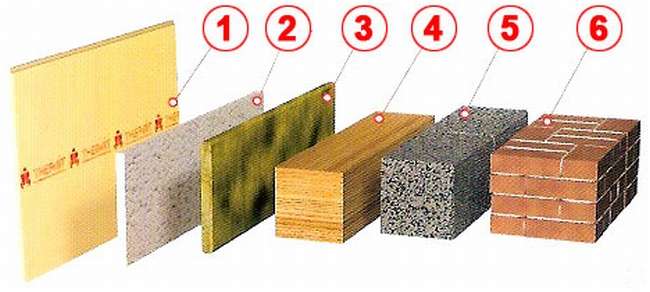

Fig. 2 Comparison of thermal conductivity of structural, heat-insulating materials
Styrofoam grades
If you are interested in the question, what is the best brand to buy polystyrene, and what is its thermal conductivity, then we will answer you for it. Below are the most popular brands of products, as well as the density values and thermal conductivity of the foam.
- PSB-C15. With a thermal conductivity of 0.042 W / mK, and a density of 11-15 kg / m3
- PSB-C25. With a thermal conductivity of 0.039 W / mK, and a density of 15-25 kg / m3
- PSB-S35. With a thermal conductivity of 0.037 W / mK, and a density of 25-35 kg / m3
Our list is completed by PSB-C5 foam, the thermal conductivity of which is 0.04 W / mK, and the density is 35-50 kg / m3. After analyzing the density and thermal conductivity, we can say with confidence that the density does not significantly affect the main quality of the foam, heat conservation.
Dimensional range of thermal insulation boards ↑
The thickness of the mineral wool slabs is of the utmost importance when choosing a material. It depends on such factors:
- dew point location;
- climatic conditions of the region;
- structural features of the roof;
- load factor;
- thermal conductivity of a given type and shape of blocks.
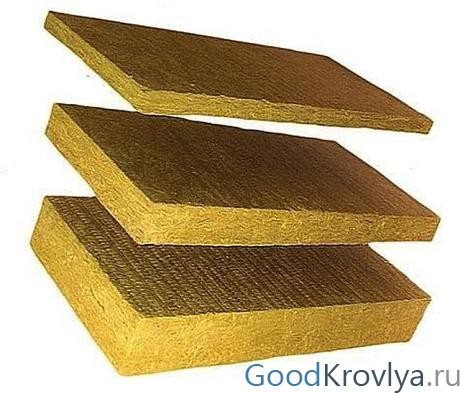

The thickness of the mineral wool slabs for the roof can be different
To avoid complicated calculations, you can pay attention to the recommended insulation parameters in different regions. So, for example, in the south of Russia, this figure is 140-170 mm, in the center - 180-230, in the north up to 350 mm with an average heat resistance of the material - 0.04 W / mK.
However, these data are not critical, given that slabs, the thickness of which is less or more, may have a much lower thermal conductivity, depending on the raw material from which they are made, the density and location of the fibers.
Almost all manufacturers provide useful advice on the use of their materials in a particular design. In particular, if we consider popular manufacturers, on packages of thermal insulation from ISOVER, it is recommended to use plates with a thickness of 30-170 mm for a flat roof, for a pitched roof - from 50 to 200 mm. KNAUF, making wool of a higher density, is advised to mount blocks of 150 mm on any surface and no more.
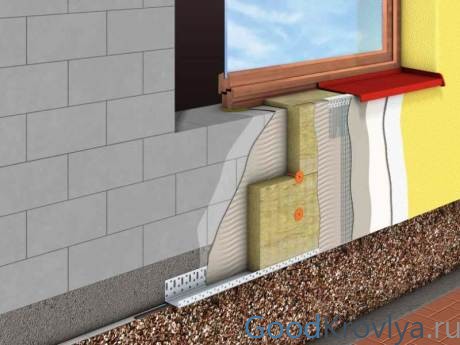

External facade insulation schemes
Thus, the choice of mineral wool insulation, taking into account all of the above, rests on several main factors:
- required thickness of the insulating layer;
- material density;
- thermal conductivity;
- the need for additional membrane layers;
- manufacturing company.
If you still doubt the appropriateness of your choice, seek advice from an experienced specialist.
Indicator table
For the convenience of work, the coefficient of thermal conductivity of the material is usually entered into the table.In addition to the coefficient itself, it can reflect such indicators as the degree of humidity, density and others. Materials with a high coefficient of thermal conductivity are combined in the table with indicators of low thermal conductivity. A sample of this table is shown below:


Using the coefficient of thermal conductivity of the material will allow you to build the desired building. The main thing is to choose a product that meets all the necessary requirements. Then the building will be comfortable for living; it will maintain a favorable microclimate.
Correctly selected will reduce the reason for which it will no longer be necessary to "heat the street". Thanks to this, the financial costs for heating will be significantly reduced. Such savings will allow you to soon return all the money that will be spent on the purchase of a heat insulator.
Basalt wool for the ceiling is an environmentally friendly and economical material. It is made from natural raw materials. Basalt minerals undergo high-temperature (over 1000 ° C) processing. As a result, the finest (1-7 microns) fibers are obtained, which form a chaotic structure. For their fastening, special polymer resins are used.
The chaotic structure leads to the presence of a large number of channels filled with air. This explains the good heat and sound insulation performance of the material. The thermal conductivity of basalt wool from different manufacturers is at the level of 0.035-0.042 W / m · K. At the same time, it is able to delay 80-100% of third-party sounds.
The decision to buy basalt wool for the ceiling is also explained by its other positive characteristics:
- non-combustible - the material does not support combustion and cannot be a source of fire;
- biological inertness - during operation, it will not become a habitat for bacteria or microorganisms;
- chemical resistance;
- stability of shapes and sizes - over time, the material does not shrink, does not change its geometry;
- ease of installation;
- durability - the minimum service life of basalt insulation declared by manufacturers is 40-50 years.
For many consumers, an important positive factor is the attractive price of basalt wool for the ceiling.
What material to choose
We sell basalt wool for insulation of ceilings in the form of mats (slabs) or roll material with a density of 30-80 kg / m³. According to users, the former are more convenient for installation. When determining the required thickness of the insulation, one should take into account the climatic zone where the house is located, the type of base material and structural features. In most regions of Russia, a layer of basalt wool of 10-15 cm will be sufficient.To ensure sound insulation of an apartment, a material 3-5 cm thick will be required.
Installation features
In order for basalt wool for the ceiling to provide reliable heat and sound insulation, it is important to carry out the installation correctly. At the initial stage, the elimination of cracks and other significant damage and the arrangement of the lathing are carried out
The latter can be made of metal profiles or wood. When using wood, it should be treated with an antifungal agent. The step of the lathing depends on the width of the insulation used.
Everyone wants to live in comfort and peace. If the owners of private houses set such a goal, then they try to protect the dwelling from extraneous noise and cold with the help of special materials. If you are looking for protection from winter cold and summer heat, you can use thermal insulation based on mineral wool. This material is presented for sale in several varieties, each of which has its pros and cons, so you need to study them before making a purchase.
Differences between mineral wool
As we have already said, there are three types of mineral wool insulation. Each of them is made from different raw materials and has its own properties.
Glass wool
Material consisting of molten glass broken, dolomite, sand, soda, or limestone.
Benefits:
- Air permeability.
- Fire resistance.
- Elasticity, vibration resistance.
- Withstands low temperatures.
- Lower cost than other mineral wool.
Minuses:
- Short shelf life - 5-10 years.
- Shrinkage 80%.
- Strongly absorbs moisture.
- If it comes into contact with the skin, it causes itching or even an allergic reaction.
As for the scope of application, usually it is mineral wool for insulating walls inside the house.
Slag
Produced from metallurgical waste. It is inferior in characteristics to other types of insulation.
- Does not provide adequate sound insulation.
- Cannot withstand strong heat. Does not burn, but cakes and loses its thermal insulation qualities.
- Does not tolerate temperature extremes.
- Protective clothing and a respirator are also required for mounting.
- Do not insulate damp rooms with metal fasteners, since under the influence of humid air, slags will contribute to corrosion.
- High hygroscopicity.
Related article: Wall outlets with USB charging
Plus - such a layer in the wall does not attract rodents and insects. Most often used on dry surfaces of temporary buildings or non-residential buildings.
Stone
Most expensive material. It is he who is usually chosen for outdoor work in private, including frame wooden houses. The production uses rocks. Thanks to this, the final product has a lot of advantages:
- High density, and hence strength.
- Fire resistance. Does not ignite at any temperature.
- Minimum shrinkage (5%).
- Long service life (up to 50 years).
- Provides excellent sound insulation.
- Almost does not break in the process of work, which happens with other types of products.
- Water vapor permeability. The fibers repel moisture.
The downside is the high cost. Despite all the advantages, it is not always rational to insulate with these particular plates.
Comparison of the thermal conductivity of Isover mineral wool
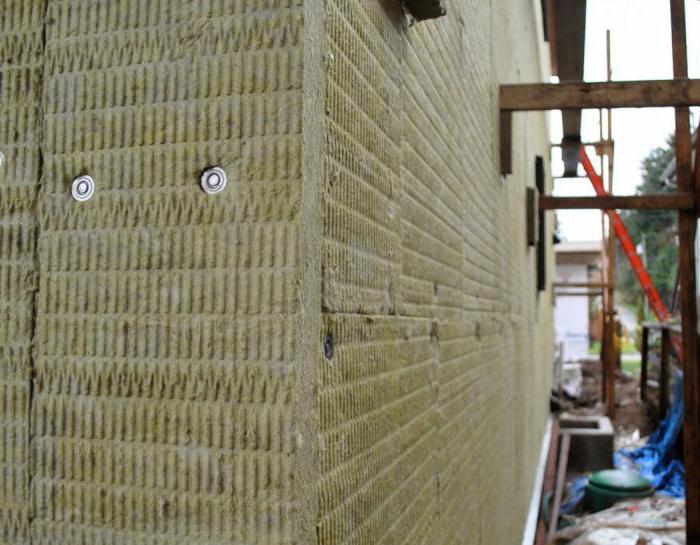

Before purchasing this or that material, it is necessary to familiarize yourself with the thermal conductivity parameters of mineral wool. The comparison can be made based on the thermal insulation under the Isover brand. If it is presented on a roll and is marked "Classic", then the coefficient of thermal conductivity will be equal to the limit of 0.033-0.037 W / m * K. This insulation is used for structures where the layer will be subjected to loads.
By purchasing Karkas-P32 mineral wool, you will use plates with a thermal conductivity coefficient in the range of 0.032-0.037 W / m * K. This wool is used for thermal insulation of frame structures. Mats "Karkas-M37" have a coefficient of thermal conductivity, which is equal to 0.043 W / m * K maximum. This material is also used for frame structures, like "Karkas-M40-AL" with a thermal conductivity coefficient equal to 0.046 W / m * K and no more.
All of the above heaters have an insignificant coefficient of thermal conductivity, which provides excellent sound and heat protection. The fiber structure plays an important role in this matter. To insulate the frame walls, the Karkas-P32 mineral wool is used, which has a thermal conductivity coefficient of 0.032 W / m * K, which is the lowest indicator.
Harm to health
Many experts are convinced of the negative health effects of mineral wool. For the manufacture of mineral wool, manufacturers use phenolic resins, as this provides it with good moisture resistance.
But according to the statements of doctors, particles of phenolic resins are capable of releasing harmful substances, formaldehyde and phenol. Doctors believe that dust fibers are retained in the lungs of a person, causing various diseases.
The greatest danger is caused by particles of 3-5 microns. The binders included in its composition cause serious diseases in people associated with the respiratory system, skin and eyes.
But despite this, most manufacturers do not stop insisting on the safety of the heat-insulating substance. Construction companies also favor stone wool and continue to use it for new construction.
Many foreign and Russian companies refuse to use mineral wool at construction sites. This is due to its wide distribution and low cost, as well as because of the harm that it has on human health.
The characteristics of the material create a favorable environment for rodents, fungi, putrefactive bacteria and mold. Long-term living in such conditions can develop choking, allergic diseases and cough.
Mineral wool has quite diverse characteristics, and it has been subjected to various tests many times. Thanks to the research results, manufacturers have been able to prove the value of mineral wool in the construction industry.
Despite the disadvantages, the insulation has good thermal insulation, is fireproof and has good acoustic qualities. It is often used to insulate building facades, walls, roofs, as well as attics and interior partitions.
Non-combustible substances make it possible to use it in the form of fireproof insulation, since mineral wool materials effectively prevent the spread of fire and cannot emit harmful toxic substances while on fire. Mineral wool is made up of fibers that are water-repellent in nature. Special additives significantly increase its quality, it is thanks to its characteristics that it managed to become world-wide popular.
Mineral wool production video:
- Wall insulation technology with mineral wool
- Which is better: foam or mineral wool?
- Rockwool, Ursa, Knauf and Technonikol mineral wool: comparison and characteristics
Standard sizes of insulation
The leader in the market of thermal insulation materials is. It is engaged in the production of plates, mats, rolls and cylinders. Varieties of mineral wool are used to insulate a specific type of structure. To insulate the frame structure, mineral wool is usually used, in which the thickness is 46-213 mm, the width is presented in the size from 566 to 612 mm, and the length is 1175 mm.
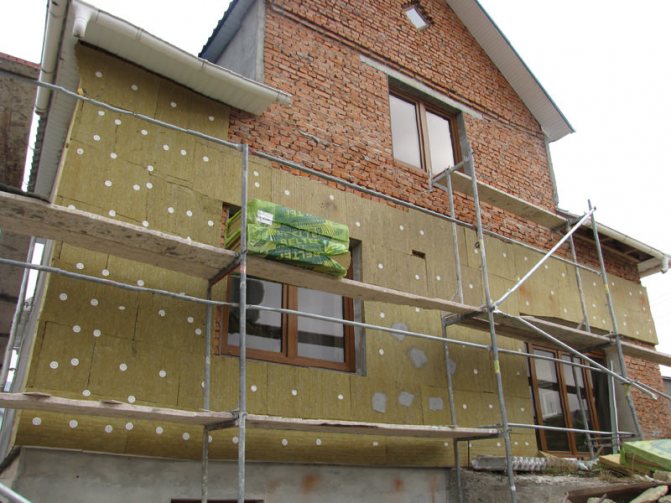

For high-quality sound insulation of multilayer walls, mineral wool of the following dimensions is used: thickness - from 51-101 to 205 mm, width - from 613 mm, length - from 1175 mm.
Flat roofs are usually insulated with wool, which has the following dimensions: thickness - from 55 to 175 mm. Width - from 1195 mm, length - from 1280 mm. All sizes of mineral wool can be found in special catalogs. The most common way to insulate outside and inside is to lay mineral wool mats on frame structures.
Cotton wool sizes:
- ISOVER М34 - 40 mm by 200 mm, 610 mm by 1220 mm. 3000 mm by 9000 mm;
- Frame-M37 - 42 mm by 203 mm, 610 mm by 1220 mm, 3000 mm by 22000 mm;
- ISOVER M40 - 50 mm by 200 mm, 610 mm by 1220 mm. 3000 mm by 9000 mm;
- Frame-M40 - 50 mm by 200 mm, 50 mm by 1200 mm, 7000 mm by 14000 mm.
To insulate the piping, mineral wool cylinders must be used. Usually, Knauf mineral wool is used to insulate the roof, facades, walls and other parts of the building, which is presented in the following variation: thickness - 55-155 mm, while its length and width may vary. The latter characteristics should be selected based on ease of use.
How to calculate wall thickness
In order for the house to be warm in winter and cool in summer, it is necessary that the enclosing structures (walls, floor, ceiling / roof) must have a certain thermal resistance. This value is different for each region. It depends on the average temperatures and humidity in a particular area.


Thermal resistance of enclosing structures for Russian regions
In order for heating bills to be not too large, building materials and their thickness must be selected so that their total thermal resistance is not less than that indicated in the table.
Calculation of wall thickness, insulation thickness, finishing layers
For modern construction, a situation is typical when the wall has several layers. In addition to the supporting structure, there is insulation, finishing materials. Each of the layers has its own thickness. How to determine the thickness of the insulation? The calculation is simple. Based on the formula:
R - thermal resistance;
p is the layer thickness in meters;
k - coefficient of thermal conductivity.
First, you need to decide on the materials that you will use in the construction. Moreover, you need to know exactly what kind of wall material, insulation, decoration, etc. will be. After all, each of them contributes to the thermal insulation, and the thermal conductivity of building materials is taken into account in the calculation.
First, the thermal resistance of the structural material is considered (from which the wall, floor, etc. will be built), then the thickness of the selected insulation is selected "according to the residual" principle. You can also take into account the thermal insulation characteristics of finishing materials, but usually they are a "plus" to the main ones. This is how a certain stock is laid "just in case." This reserve allows you to save on heating, which subsequently has a positive effect on the budget.
An example of calculating the thickness of the insulation
Let's take an example. We are going to build a brick wall - one and a half bricks, we will insulate it with mineral wool. According to the table, the thermal resistance of the walls for the region should be at least 3.5. The calculation for this situation is shown below.


If the budget is limited, you can take 10 cm of mineral wool, and the missing one will be covered with finishing materials. They will be inside and out. But, if you want the heating bills to be minimal, it is better to start up finishing with a "plus" to the calculated value. This is your reserve for the time of the lowest temperatures, since the norms of thermal resistance for building envelopes are calculated based on the average temperature over several years, and winters are abnormally cold
Therefore, the thermal conductivity of building materials used for decoration is simply not taken into account.
How the purpose of mineral wool affects its size
Insulation is necessary for any building in order to:
- reduce heat loss in winter;
- protect from overheating in summer;
- to preserve the elements of the supporting structure of the building from the effects of negative environmental factors;
- increase the service life of the structure.
These tasks are quite within the power of inorganic insulation. From a solid list of materials of this kind, mineral wool is in special demand. Mineral wool has long been successfully used in construction.
Related article: How to drill ceramic tiles on the wall
By giving preference to this type of insulation, the consumer receives the following advantages:
- thermal conductivity index 0.035 W / mk, one of the best;
- quality dielectric properties;
- high rates of vapor permeability;
- the best parameters of fire resistance;
- low hygroscopicity;
- high resistance to aggressive environments.
This material can be used for wall insulation, both inside and outside. It is used for roofs, attics and basements, and interior partitions. Its dimensions are of the same standards as the distance between the guides where the mineral wool is laid. If there are violations of standards in construction, it becomes necessary to adjust the size of the insulation.
Classification of expanded polystyrene
Plain Styrofoam
Thermal insulation material, which is obtained by foaming polystyrene. As mentioned above, its volume is 98% of air, which is sealed in granules.This speaks not only of its excellent thermal insulation qualities, but also of its sound insulation properties.
The main advantage of the material is the lack of the ability to absorb moisture. In addition, it does not rot and does not biodegrade. Durable material, lightweight and easy to use. It can be glued to any building material.
Expanded polystyrene is easily supplied to combustion, but it contains such a substance as a fire retardant. It is this that endows the foam with the ability to self-extinguish. In addition, expanded polystyrene cannot be used to insulate facades. This is due to its low vapor permeability. And in order to carry out work with foam under the roof, you should think carefully about the ventilation system.
Usage depending on the grade of material
- PSB-S 15. Marking of foam plastic indicates that it can be used to insulate structures that are not subjected to mechanical stress. For example, insulation of the roof, the space between the slings and the ceiling.
- PSB-S 25 and 25F. Common labeling of expanded polystyrene. It says that any surface can be insulated. Walls, facades, ceilings or flooring, roofing.
- PSB-S 35 and 50. This material can be used to insulate objects that are under a constantly high load.
Glass wool: basic parameters
The thickness of the fibers of this material reaches 15 microns. The length may exceed 50 mm. Thanks to these parameters, glass wool has high strength and excellent elasticity. However, working with such a heat insulator requires maximum care.
Places of using mineral wool.
Glass fibers can cause serious injury if broken. Glass dust, if inhaled, can damage the lungs. Safety precautions when performing work using this type of thermal insulation requires:
- protective clothing;
- glasses;
- respirator;
- gloves.
The most important characteristics of mineral wool are:
- The maximum heating temperature is 500 °. Heating is considered to be limiting if it does not exceed 450 °.
- The highest cooling temperature is -60 °.
Back to the table of contents
